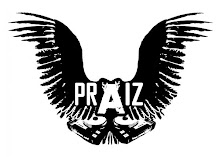1: What traditional ritual have you participated in that reminds you of an interactive narrative?

My initial thought to this question is that all narrative is interactive so literally anything with some form of storyline could be interactive! I thought back to the good old days when interactive books were around such as where's wally (right). Simple and effective, find wally, move onto the next page, constantly interacting with the book until you finish and buy another where's wally!
2: What game or sport have you played that could be adapted to a form of interactive entertainment?
Well the obvious thing to say is any sport has been adapted into a computer game e.g. Pro Evolution Soccer (Football simulation). Also Wii Sports from Nintendo Wii allows you to play a simulated sport in a similar way to how you would actually play a game in reality.
It could be possible to make board games more interactive, such as bringing them to the digital world e.g. Monopoly DVD etc.
See Wheres wally idea - next post.
3: What work of traditional storytelling have you read that has a narrative technique that could be applied to digital media?
The first thing that came into my mind is children's learning books, i was watching my 5 year old cousin play with a book the other day which involved the child sticking in different shape blocks into the books different pages, each page revealing a new puzzle for the child to adapt to.
I distinctly remember doing something like this when i was a child and thought this could easily be applied to digital media e.g. interactive flash based puzzle book.
5: Can you think of any work of traditional entertainment that breaks the fourth wall? How could this be done in Interactive Media?
The traditional forms of entertainment that i can think of which breaks the fourth wall is during the shakespeare times where theatre productions were viewed as a form of "play". The characters would be aware of the audience and interact with them e.g. Punch and Judy - "Thats the way to do it!"
However, The character would still act within the scenes in a proffesional way so the audience know they are still watching a theatre production.
This reminds me of films such as Saving Private Ryan in which the water and blood splashes against the camera lens, reminding you that this is still a film (taking you away from its realism)


No comments:
Post a Comment